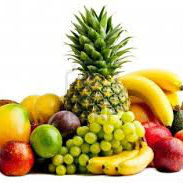UNITED STATES—Eat it all, I say. Not in the way your mother meant (i.e. cleaning the plate), but taking advantage of all nature has provided in neat streamlined packages called fruit. This is one of those times when it may behoove us to choose organic because, if we are going to eat skin and all, we’d best avoid a product supposedly marinated in chemicals.
Apples – Rather than eating an apple from the outside in to the core—which wastes approximately 30 percent of the fruit and leaves you a piece a detritus to be parked in the garbage or mummify in your pocket. When eating an apple from the top or the bottom, the core simply vanishes, down the hatch, allowing for 100 percent consumption. You can spit out the seeds or swallow them as well.
Are the seeds good for you? There is a lively debate over whether small amounts could protect from cancer or rather large amounts could be toxic. At any rate, a couple of seeds won’t kill you. And whatever your grandmother told you about an apple tree growing in your stomach—that was hype.
Bananas – An easier way to open a banana is from the bottom, squeezing it between thumb and forefinger. If ripe enough, it will break easily open. I had never really thought about this before surfing the internet. But there you go. A Huffington Post writer considers that the traditional way, to unpeel the stem from the top creates a tug of war between the stem and body of the banana. Also, the from-the-top method of peeling can mash the interior of the banana, depending on ripeness Monkeys apparently have been doing it the “right†way all along, peeling a banana from the bottom.
Banana peels contain more fiber than the banana inside, reports Livestrong.com. Dietary fiber promotes digestion and bowel movements and can reduce blood cholesterol levels. Banana peels also contain tryptophan, which increases serotonin levels (feel good chemicals) in the body and affects mood, much like the drug Prozac does. (I haven’t tried eating a peel, but when I do it will be from an organic banana, given the bad rap conventionally grown bananas have for being doused in bug spray).
Strawberries – You don’t even need a knife. Just pluck of the leaves and avoid lopping off the top and losing a third of the berry. Between your thumb and forefinger, the necessary tools are already provided by nature for enjoying both the banana and the strawberry.
The byproduct of this process, strawberry leaves have a mild, fruity flavor excellent in tea. Strawberry leaves are one of the best sources of naturally occurring Vitamin C (along with bell peppers, cantaloupes, oranges and grapefruit). Strawberry leaves steeped in boiling water make a tea very soothing to the stomach. Use either fresh or completely dried leaves harvested during spring and summer; those during blossoming are particularly recommended.
WARNING: Wilted or partially dried out leaves can be very un-soothing for the stomach, leading to painful nausea and vomiting.
Strawberry leaves’ traditional usage in herbal medicine is for aches and pains. The leaves have been shown to contain small amounts of the active pain inhibitor in aspirin, methyl salicylate.
Pomegranates – This messy, astringent Biblical fruit is way less difficult to seed if you use a bowl of water. First, cut the fruit in half: one through cut across the old equator. Then, submerge the fruit in water, pull the fruit apart, and squeeze out the million purple-seeded payload, releasing the seeds with minimal mess. The water keeps the inky seeds from spatters on your white cashmere sweater, for the seeds gather on the bottom of the bowl and unwanted membrane, which holds the seeds, will even rise to the top of the water. Later eat, enjoy, scoop into a salad.
Containing twice the anti-oxidants as the purple corn-like fruit inside, pomegranate peels yield more of the powerful antioxidants such as flavonoids, phenolics, and—a chemical name so long I’m embarrassed to write it—proanythocyanidins. Once considered to be a wasted part of the fruit, now it is obvious that the pomegranate’s leathery outer skin could be beneficial in a ton of ways. Enjoying in ain‘t easy, though. It has to be sun dried or dehydrated and then ground in a seed grinder or mortar and pestal to be converted into powder form, and then stored away from light in a bottle to preserve antioxidants. (Way too much hassle). However, pomegranate rind powder is reputed to be an excellent source of beta-carotene (good for eyes and skin), potassium (good for the heart), phosphorous (kidneys) and calcium (bones and teeth). How cool is that!
Humorist Grady Miller is the author of “Lighten Up Now: The Grady Diet,†available on Amazon. He can be contacted at grady.miller@canyon-news.com.






